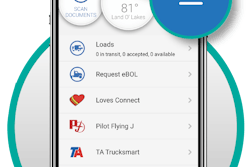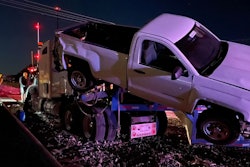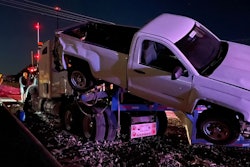Embracing artificial intelligence (AI) is a transformational growth move for any business that needs a faster and more accurate path to product development.
At an industry level and in almost every field imaginable, "AI for good" is the convergence of the best minds and technologies gathering and sharing data to speed up innovation and solve the world’s most urgent challenges.
The most high profile example of such AI for good is the massive, international effort that is driving Covid-19 drug discovery and vaccine development in record time. Improving and saving lives is the cornerstone of AI for good and, like any movement, AI is thankfully sweeping across the automotive industry at an inspired pace to help solve the worrisome rise in distracted driving roadway fatalities. Drivers, passengers, cyclists and pedestrians all stand to benefit.
When it comes to driving, commercial fleet vehicles and drivers log more miles than anyone else, and these are not leisure miles. Fleets drive a disproportionate number of urban miles, which are the most complex, highest-risk roads where fatalities take place.
Despite advancements, road safety continues to be a major issue. A fleet accident typically costs $16,500 in damages and $57,500 in injury related costs for a total of $74,000. This does not include a broad range of hidden costs including legal fees, insurance increases, lost employee and vehicle time, negative publicity and dampened morale. Collisions and fatalities continue to grow. According to the National Safety Council, motor vehicle deaths in 2020 were estimated to be the highest in 13 years, despite high drops in miles driven with losses running into the tens, if not hundreds of billions of dollars.
Yet, for decades, the fleet industry’s efforts to meaningfully lower risk and avoid collisions have been stifled by a limited ability to identify, quantify and therefore mitigate the most critical driving risks in real-time. Historically, fleet operators have managed safety risks with training programs, manual coaching sessions and manager ride-alongs with drivers.
In the early 2000s, fleets started to introduce telematics, which measures characteristics of driving based on vehicle motion (such as speed, acceleration and braking) and reports that data to centralized databases and applications in the corporate office. Telematics offer data, but the data generated is a crude, indirect, and poor proxy for actual driving risk. For example, a hard braking event, which would be considered a negative in a telematics system, may actually be a result of excellent defensive driving that helped avoid an accident.
But this all changed with the emergence of AI.
Augments human decision making
We’re only human. Even the safest driver can become preoccupied easily. Especially in today’s environment where there have never been more distractions at a driver's fingertips: GPS, adjusting the radio, texting, talking on the phone, etc. This is all in addition to the things happening outside of the car: bikers, runners, other cars, construction crews and so forth.Over 95% of what happens on roadways is predictable. Yes, you read that correctly. This is all made possible with the collection of data and with the help of AI.
By utilizing data that is gathered from various avenues, we’ve been able to make strides in predicting accidents before they occur. For example, when an AI-enabled device sees someone approaching a stop sign at high speeds without the indication of actually stopping, tech can step in and alert the driver of an imminent threat. Beyond what’s happening outside the car, AI can also look inside the car and analyze the drivers behaviors. Things such as driver drowsiness can be evaluated and identified and, if applicable, will set off an alert to help give the driver extra time needed to take a preventative action and avoid the collision.
Provides real-time info
For collision prevention to actually work, AI algorithms that analyze the situation must be highly precise and not issue too many false alerts that cause a driver to disengage.Real-time, in-cab alerts are a welcome, automated coaching feature for fleet safety managers. These behavioral nudges can dramatically improve driver performance in mere weeks without human intervention. These gains can then be reinforced with cloud-based scoring models and analytics that enable the automatic identification of highest risk drivers for additional targeted coaching, but also top performers for rewards and recognition. Finally, if needed, video footage of a collision can be used to exonerate drivers and accelerate claims resolution procedures.
AI-based technologies combined with data science are truly driving revolution in fleet safety and risk management. Auto and truck manufacturers are building this advanced vehicle safety technology into the next-generation of vehicles to enable all drivers, including consumers, teens and elderly, to benefit from significant collision reduction. Within the next decade, we’ll see it being used to help push along the adoption of electric vehicles and semi autonomous vehicles as well.
Stefan Heck, is CEO of Nauto, a real-time, AI-enabled driver and fleet safety platform that predicts, prevents and reduces high-risk events in the mobility ecosystem.













